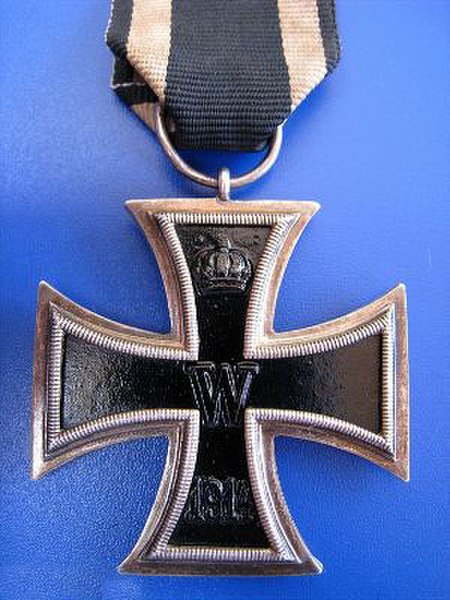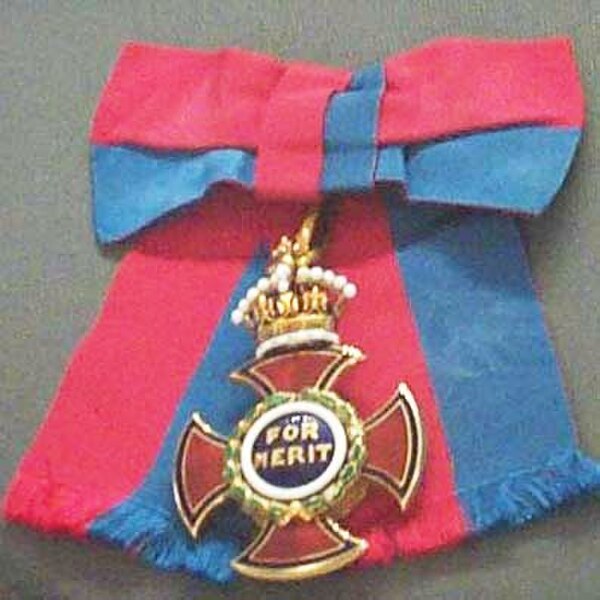A cross pattée, cross patty or Pate, or cross paty, also known as a cross formy or cross formée, is a type of Christian cross with arms that are narrow at the centre, and often flared in a curve or straight line shape, to be broader at the perimeter. The form appears very early in medieval art, for example in a metalwork treasure binding given to Monza Cathedral by Lombard queen Theodelinda, and the 8th-century lower cover of the Lindau Gospels in the Morgan Library. An early English example from the start of the age of heraldry proper is found in the arms of Baron Berkeley.
German Iron Cross, World War I
Order of Merit
Coat of arms of the Brotherhood of Blackheads shown in the House of the Blackheads, Riga
Guards at Poland's Tomb of the Unknown Soldier, Warsaw. Behind them, the Virtuti Militari emblem.
The Christian cross, seen as a representation of the crucifixion of Jesus on a large wooden cross, is a symbol of Christianity. It is related to the crucifix and to the more general family of cross symbols, the term cross itself being detached from the original specifically Christian meaning in modern English.
The Alexamenos graffito
The Sinai icon of Christ Pantocrator (6th century), showing Christ with a cruciform halo and holding a book adorned with a crux gemmata
An Eastern Catholic Syro-Malabar Major Archbishop with his blessing cross
The Vatican Obelisk in Rome








